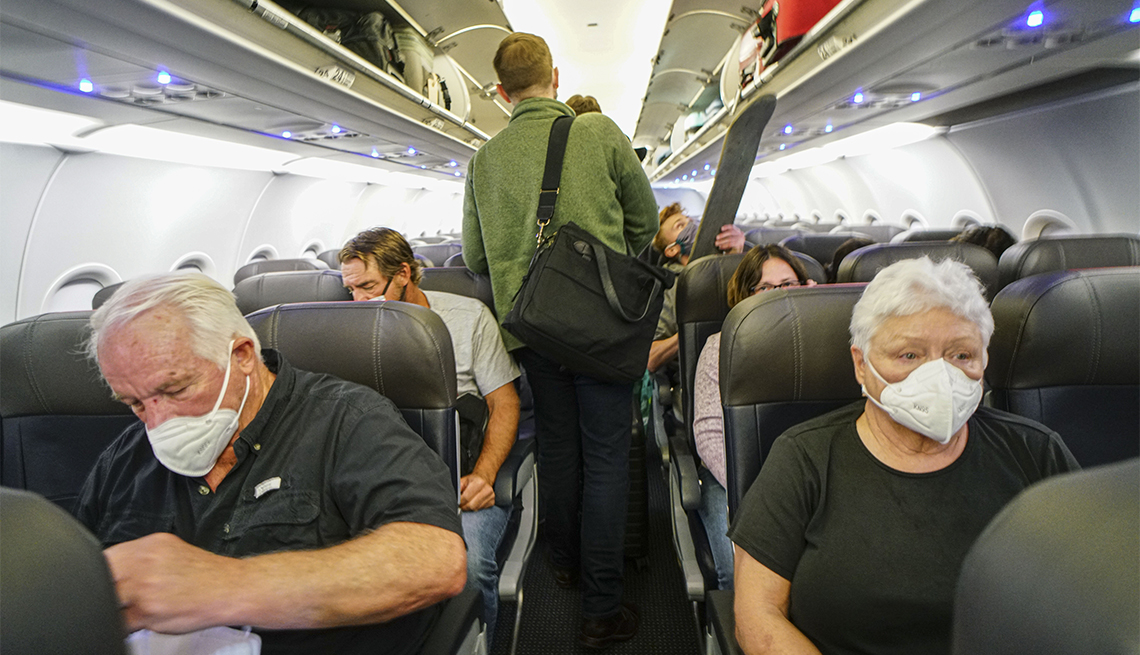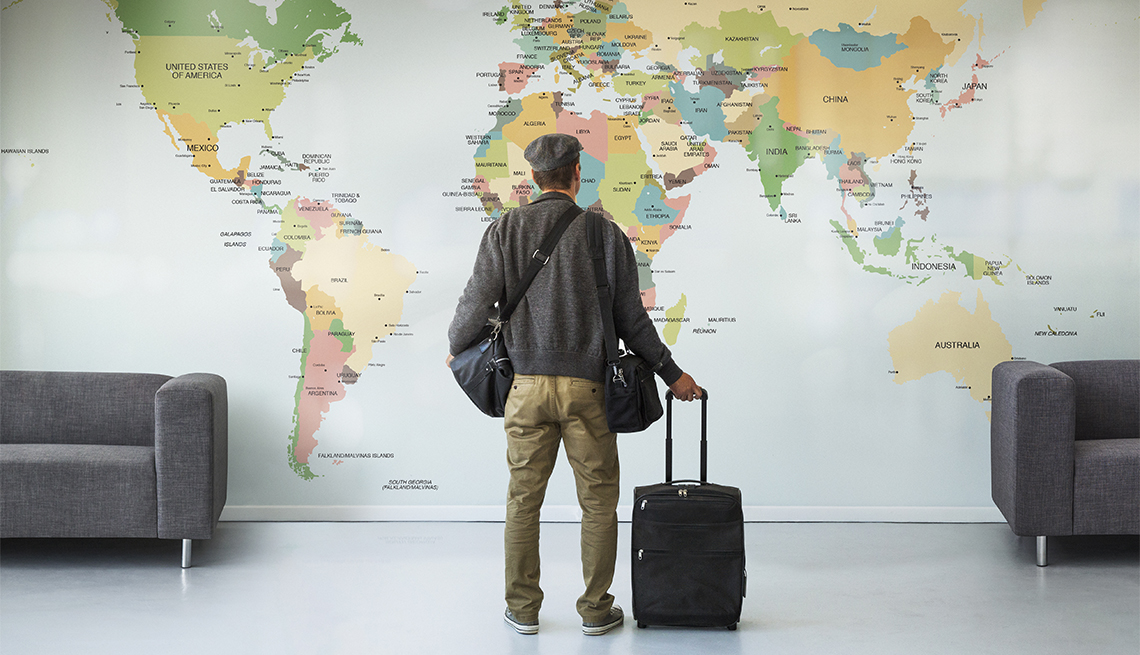How Airlines Are Changing the Flying Process

Passengers board flight on May 20, 2020 in San Diego, California
Travelers are slowly beginning to take to the skies again, as coronavirus-related restrictions ease, and they’re finding that flying in the COVID-19 era is a very different experience than it was before the pandemic. Among other changes, there are often few if any food options, empty middle seats, no magazines in the seat pockets and all travelers and airline staff wearing masks.
Here’s what to expect if you plan to fly in the coming weeks.
Pre-flight
Once you are through security (see new rules) and arrive at the gate, you are likely to find plenty of elbow room. The number of airline passengers screened by the TSA was 391,882 on June 4, down from 2,623,947 a year earlier. And many airlines are limiting the number of passengers per flight to prevent the crowded conditions that might lead to infection.
They are also handling boarding differently in order to encourage social distancing.
While Southwest Airlines previously asked passengers to line up in two adjacent lines of 30, it’s now boarding just one line of 10 passengers at a time. Alaska Airlines, Allegiant, Delta Air Lines and Frontier Airlines are boarding their planes from the rear rows forward to avoid crowding in the aisles.
United is calling up smaller numbers of passengers at a time, and asking them to scan their own boarding passes. American Airlines continues to board passengers by groups — it says the row system only works if everyone is at the gate, which is impossible with the number of connecting flights it operates — though agents space people out during boarding. Spirit Airlines asks passengers to scan their own boarding pass and will allow anyone to board at the end of the boarding process to reduce their time on the plane.
Frontier Airlines is the first U.S. airline to announce that it will take passengers’ temperatures with a touchless thermometer before boarding, and will block anyone with a temperature of 100.4 F or higher from flights. Frontier says it “will work with that customer to rebook travel on a later date or otherwise accommodate the traveler’s preferences with respect to their reservation.” Like other airlines, it’s also asking passengers to complete an online “health acknowledgement” before check-in to confirm, among other things, that they will wash/sanitize their hands before boarding, will check their temperature before heading to the airport, and have had no symptoms related to COVID-19 in the previous 14 days.
Air Canada is taking passengers’ temperatures before boarding now as well. It may become a standard practice. In a recent CBS interview Southwest CEO Gary Kelly urged the TSA to include temperature checks as part of its passenger screening process, rather than leave it up to the individual airlines.
In-flight
Seat spacing: For now, most carriers have announced that they are blocking many — but not all — middle seats so passengers don’t have to fly next to strangers. However, that promise may expire in the coming weeks. Frontier Airlines has said it will block middle seats through June 30 (it drew an outcry when it announced it would charge passengers who wanted a blocked middle seat, and dropped the policy). Delta has said it will cap seating at 50 percent capacity in first class and 60 percent in the main cabin, and will block middle seats as well as some aisle seats on planes that have two-by-two configurations through Sept. 30. American Airlines is blocking half of its middle seats. Allegiant says it spaces people out as practicable but that, “as more states reopen and people decide to fly again, this won’t always be possible,” according to a spokesperson.
Cleaning: All carriers have announced enhanced aircraft cleaning procedures including the use of hospital-grade disinfectants. Starting in July, Alaska will provide sanitizing wipes on board its planes. Nonetheless, expect many more touchless interactions in flight.
Food: Galleys are largely retired for now. JetBlue’s beverages and snacks come in a pre-sealed bag. Frontier planes will carry only a limited amount of bottled water for sale. On flights of less than 2,200 miles, American hands out snacks and bottled water only at boarding; on long-haul international flights, meals and drinks are served. Alaska recommends fliers bring their own food and water on board.
Entertainment: Many airlines have removed seatback literature, including inflight magazines (American’s publication, American Way, is a prominent exception). Alaska has moved the content to its app. Unless you’re flying JetBlue, don’t assume you’ll have a seatback screen; most major carriers, including United and American, were already moving their video entertainment to their apps for viewing inflight before the pandemic. JetBlue will enable your personal electronic device to act as the seatback television remote control on some planes.
Personal protection: Most domestic carriers require that fliers wear face masks in flight. Some, including American Airlines, are distributing them. Air Canada is supplying Customer Care Kits including mask, gloves, bottled water, hand sanitizer and disinfecting wipes. Allegiant distributes kits with masks, gloves and cleansing wipes. If you’ve forgotten your mask, Alaska will supply one on request.
Flight crews will also be wearing masks.
Depending on your destination, expect to keep those face coverings on after landing until you leave the airport. Reagan National and Dulles International airports in Virginia, for instance, require everyone in public spaces to wear face coverings, following the state’s mandate.




